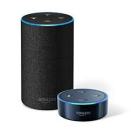![]() Growing up in the 20th Century, things looked like what they were. Telephones were easily identified as telephones. Television sets were easily identified as televisions. And radios were easily identified as radios.
Growing up in the 20th Century, things looked like what they were. Telephones were easily identified as telephones. Television sets were easily identified as televisions. And radios were easily identified as radios.
I’m a member of many social media radio groups, I even host a couple of my own, and we all use classic radios to brand  our social media pages. In my case, it’s a cathedral style radio made popular back in the 1930s. A style of radio I never owned until I received a retro transistorized version at a company manager’s meeting back in the late 1980s.
our social media pages. In my case, it’s a cathedral style radio made popular back in the 1930s. A style of radio I never owned until I received a retro transistorized version at a company manager’s meeting back in the late 1980s.
Smartphone
When the smartphone became ubiquitous and people began to listen to radio broadcasts  on their phones, I wondered if the new icon for radio might be just that, a smartphone device. But then, this same device could also represent a TV, a camera, a movie camera, a book, a newspaper, a magazine…well you get the idea, a lot of media was instantly replaced by this singular device.
on their phones, I wondered if the new icon for radio might be just that, a smartphone device. But then, this same device could also represent a TV, a camera, a movie camera, a book, a newspaper, a magazine…well you get the idea, a lot of media was instantly replaced by this singular device.
Smartspeaker
Then, a year ago, Santa brought me an Amazon Echo and Alexa became the servant I  never had. She’s always there, waiting for me to call her name and fetch for me whatever I need, be it the latest news, weather, wind chill, traffic conditions, music, and more.
never had. She’s always there, waiting for me to call her name and fetch for me whatever I need, be it the latest news, weather, wind chill, traffic conditions, music, and more.
I then thought that maybe the 21st Century radio icon would look like this device.
An App
 These days, radio still dominates in the car, and the vehicles being produced today feature entertainment systems. These dashboard entertainment centers are loaded with unprecedented engagement capabilities and each one is accessed by an identifying App. Companies like Pandora and Spotify are providing a content rich environment to take full advantage these entertainment systems.
These days, radio still dominates in the car, and the vehicles being produced today feature entertainment systems. These dashboard entertainment centers are loaded with unprecedented engagement capabilities and each one is accessed by an identifying App. Companies like Pandora and Spotify are providing a content rich environment to take full advantage these entertainment systems.
It’s hard to imagine how anyone will be able to keep their eyes on the road as song titles, logos, biographical information about the artists, concert dates and so much more accompanies the music that is playing.
By comparison, a broadcast radio station’s programming to these devices seems rather anemic.
And things aren’t likely to change anytime soon, as broadcasters see the costs of these opportunities to be prohibitive on many levels. For one thing there are all the new licensing fees that could be attached to broadcasting this media rich environment. For another, the few people working in today’s radio clusters barely have enough time to get things done now without the addition of coordinating all of these other items. And if you add more people to handle the work, then the costs will really rise. So, Return On Investment (ROI) issues rear their ugly head and everything comes to a standstill.
Not Right Now
Over the years, I’ve been involved in these types of discussions and the phrase most often heard by those who hold power over the purse is “not right now.”
Discussions usually degenerate into the drawbacks of moving forward, or how these new innovations will be paid for, and end with no progress being made.
Think AM Stereo. Think FM Quad. Think HD Radio (before broadcasters learned they could use HD’s subchannels to feed multiple FM analog translators).
Yes, Right Now
The reality is that these changes are taking place as we speak. Is the radio industry focused on the needs, wants and desires of future listeners or a 20th Century radio spectrum grab strategy?
“Sometimes I feel like a creature in the wilds,
whose natural habitat is gradually being destroyed.”
-Lord Grantham, Downton Abby
Radio’s last beachhead is in the automobile.
If it doesn’t wish to see its dominance vanish, it will need to focus on all that the vehicle entertainment systems are capable of delivering, and provide the unique content that is a “must have” for the media consumer.

I’m starting to look forward to my Sunday morning Dick Taylor blog just as much as waking up with a cup of coffee and CBS Sunday Morning. Good morning Dick. Have a great week.
LikeLiked by 1 person
Thank You Gregg. Sounds like I’m in great company.
-DT
LikeLike
Did I already send a note? Maybe. But if this is a repeat, I apologise.
I remember when most people thought FM will go nowhere, maybe die out. Some even said the high audio quality on FM would be disliked. I became aware of FM just after the FM band was starting to move up from the original 42-50 MHz chunk of spectrum. No one will buy the new radios. That’s what they said.
LikeLiked by 1 person
Yes, I’ve often read that the individuals who create something entirely new are often labeled “crazies” in their own lifetime and only later does the power of their invention/discovery become truly appreciated.
-DT
LikeLike
It’s cheaper to feed your translator network with Barix boxes than with HD. But HD Tag is an undervalued and user-utilized lead capture mechanism better than phone numbers or URLs. The Streaming kills Radio argument is the 8-track kills radio redo. The vast Majority of audience listens through the commercial break as long as the ads are relevant.
Like
Thank You Mark for adding your thoughts to this discussion.
-DT
LikeLike
It may be cheaper to use a Barix box (really? Barix? At least use a BRIC Link or something) but what you CAN’T do with a translator on a Barix box is independent programming. If you use your translator to relay an HD2, you can create a whole “new” radio station out of “nothing”.
LikeLike
Yet another insightful article. It proves that the more things change in broadcasting and media in general, the more that people, and the broadcasting industry as a whole, must adapt to such changes. As always, thanks for posting this blog.
LikeLiked by 2 people
Thank You Albany News Sentinel for your kind words.
-DT
LikeLiked by 1 person
You’re welcome.
LikeLiked by 2 people